What if I told you that writing a book even if you’ve never published before, could be the fastest way to attract premium clients, command higher fees, and position yourself as the go-to expert as a small business owner?”
Most small business owners pour money into ads, social media, and networking, only to see diminishing returns. Yet the world’s most successful entrepreneurs, from Grant Cardone to Marie Forleo used one often-overlooked tool to build unstoppable credibility: a book.
Here’s the truth:
- A study shows that 41.4% of marketers found long form content like books are most effective when it comes to conversion rates.
- You don’t need to be a “writer”— ghostwriters can do 90% of the work for you, use AI to create the framework for the book, or you can get trained to write your book .
In this post, you’ll discover the hidden business benefits of writing a book (beyond just “authority”) and how to write your book in 3 months—even if you’re time-strapped (a writing resource included). If you’re ready to stand out in a crowded market and turn your expertise into a lead magnet, let’s dive in.
What is a Small Business?

A small business is more than just a company with fewer employees or lower revenue than a large corporation—it’s the heartbeat of local economies, the foundation of entrepreneurship, and often, a deeply personal venture for its owner. While definitions vary, Nigeria’s Small and Medium Enterprises Development Agency (SMEDAN) classifies small businesses as enterprises with 10-49 employees and less than ₦100 million in annual turnover.
But the true Nigerian small business story is more colorful than these numbers suggest. These are typically owner-operated ventures where:
• The founder is the CEO, marketer and accountant combined.
• Business decisions are made by the owner.
• Customer relationships are personal and built on trust.
Picture Iya Ijebu’s buka down the street where she personally cooks her famous Ofada Rice and Ayamase sauce. Or consider Tunde, the young techpreneur running a digital marketing agency from his Lagos apartment with three staff members. The freelance graphic designer who crafts brands for startups.
What makes Nigerian small businesses special is their resilience. They survive power outages, multiple taxation, and economic fluctuations through pure grit and innovation.
These are the heartbeat of Nigerian commerce – businesses built on personal relationships, adaptability, and the owner’s sweat equity. These businesses thrive on close customer relationships, adaptability, and the owner’s direct involvement in daily operations.
Unlike companies, small businesses often operate with lean teams—sometimes just the founder wearing every hat, from CEO to customer service. They might be brick-and-mortar stores, home-based operations, or online ventures, but what unites them is their personalized approach. A small business isn’t just selling products or services; it’s often tied to the owner’s identity, values, and vision.
In Nigeria, small businesses typically look like:
- A solopreneur running a consulting or coaching firm from a laptop.
- A local bakery where the owner decorates every cake.
- A fashion designer in Yaba making custom aso-ebi for weddings.
- A POS operator in Kano providing essential banking services.
- An agribusiness owner processing garri in Ibadan with 5 employees.
- The roadside vulcanizer in Aba who’s been fixing tires for 15 years.
Small Business Owner vs Entrepreneur

At first glance, small business owners and entrepreneurs might seem identical – both run businesses, manage teams, and chase profits. But beneath the surface, these two roles operate with fundamentally different mindsets and objectives. Let’s explore what truly sets them apart.
Imagine two Nigerians starting businesses in Lagos. Ada opens a neighborhood bakery, perfecting her Coconut bread recipe and building loyal customers within her community. Across town, Tunde launches a tech startup developing an app to revolutionize public transportation across West Africa. Both are businesspeople, but their approaches reveal the core differences between small business owners and entrepreneurs.
Small business owners like Ada typically focus on creating stable, self-sustaining operations. Their success is measured by consistent profits, personal involvement in daily operations, and serving an established local market. The bakery isn’t just Ada’s business – it’s her livelihood, and she’s content growing it gradually while maintaining control. She might expand to a second location eventually, but rapid scaling isn’t her priority.
Entrepreneurs like Tunde think differently. They’re driven by innovation, disruption, and scaling potential. Tunde isn’t just solving a local problem – he’s reimagining an entire industry. His success metrics include market share, investment capital, and expansion possibilities across borders.
While Ada worries about daily bread sales, Tunde obsesses over user acquisition costs and venture capital pitches The risk appetite varies dramatically too. Same goes for their growth and long term goals.
Many successful entrepreneurs started as small business owners before recognizing scaling opportunities. Some small business owners evolve into entrepreneurs when they decide to scale. For instance, a fashion designer starts with one boutique and later launches a nationwide franchise. Or a caterer begins with home deliveries then expands into packaged food products.
Why Every Small Business Owner Should Write a Book

Establishing credibility is everything in our world today. One of the most powerful yet unused strategies is for a small business owner to write a book. And I’m not talking about just adding “author” to your bio—it’s a transformative business growth tool with measurable benefits.
First, writing a book establishes unmatched authority and trust. Consider this: buyers report trusting a business more when its founder has published a book. When you share your expertise in print, you’re not just selling a product—you’re positioning yourself as the go-to expert in your field. That trust translates directly into customer loyalty and higher conversion rates.
Beyond credibility, a book serves as your 24/7 lead generation machine. Take the example of a Lagos-based business consultant who published a practical guide on LinkedIn. Within months, that single book landed her five corporate clients who reached out directly after reading her work. Personally, I got a ghostwriting job: to write the memoir of a woman because I have written and self-published my books. Unlike social media posts, a book continues working for you long after publication.
Then there’s the passive income potential. A well-structured business book can become an additional revenue stream through the book assets you create with it (audiobook versions, events, etc.) and direct sales.
Perhaps most exciting are the media and speaking opportunities that follow. Authors automatically gain access to platforms that would otherwise be difficult to penetrate. Your book becomes your ticket to podcast interviews, conference speaking slots, and features in industry publications—all of which drive visibility and attract premium clients.
For any small business owner looking to write a book, the benefits extend far beyond vanity metrics. It’s about creating tangible business growth, establishing unshakable credibility, and opening doors to opportunities that would otherwise remain out of reach. In our digital age where expertise is currency, your book might just be the wisest business investment you’ll ever make.
The question isn’t whether you should write a book—it’s how soon you can start. Your competitors certainly are.
Debunking 5 Myths That Stop Business Owners From Writing a Book

Many business owners dismiss the idea of writing a book because of common misconceptions. But what if these fears were unfounded? Let’s dismantle the top five myths holding you back from becoming a published author—and reveal the real solutions.
Myth #1: “I’m Not a Writer”
You don’t need to be Shakespeare to write a book. Or J.K. Rowling to write a book that grows your business. In fact, with today’s tools (AI, ghostwriters, self-publishing), you can create a book in 30 days or less.
Use ghostwriters (professionals who write in your voice) or AI tools like ChatGPT for create the outline of your book. A resource like this eBook can help you to write your book with daily writing prompts.
Myth #2: “It Takes Too Long”
A book doesn’t require years—just focus. Follow a 30-day book sprint (500 words/day = 15,000 words in a month).
You can also use the dictating method to write your book. What you do is, you speak and record chapters of your book, transcribe and edit the book. This is the fastest way to write your book especially for those who have limited time.
Myth #3: “No One Will Read It”
The truth is even a short book boosts credibility—and can be repurposed endlessly. You can turn chapters into LinkedIn posts, email newsletters, or podcast episodes and social media contents. A free eBook can grow your email list while proving your expertise.
Myth #4: “Books Don’t Make Money”
The return on investment isn’t just about sales—it’s new clients and opportunities. I mentioned earlier that I got a ghostwriting job because I am self-published author. Not only that, I have a training program for aspiring authors where I empower them to write and self-publish their books in 5 months. I wouldn’t have been able to do that if I hadn’t self-published my own books. It is the knowledge and experience from writing my book that I use to teach others.
You can earn passive income by distributing your book on platforms like Amazon KDP, D2D, Bambooks, Kobo etc. If you keep sending traffic to salepages of your book on these platforms, you get paid royalties (even while you sleep).
Myth #5: “I Need a Traditional Publisher”
No, you don’t! Gone are the days when the only way to publish your book is through traditional publishing companies. A lot of people have embraced self-publishing and it is as effective as traditional publishing. Self-publishing is faster, cheaper, and more profitable.
How?
Platforms like Amazon KDP (free) help you sell your book to aa global audience. You keep 100% of rights and 70% of your profits (unlike traditional deals). If you want to know how to go about self-publishing your book, participate in this training program to become a self-published author in just 5 months.
Your book isn’t just pages—it’s a marketing asset, credibility booster, and revenue stream. The barriers you fear? They’re illusions.
How to Write & Publish Your Book as a Small Business Owner: A Step-by-Step Guide

Writing a book as a small business owner isn’t about becoming a bestselling author—it’s about leveraging your expertise to grow your brand, attract clients, and open new revenue streams. If you’re a small business owner wondering how to write a book, the process is simpler than you think. You don’t need a literary background—just a clear strategy.
Below is a detailed, step-by-step roadmap to take you from blank page to published author, while maximizing your book’s impact on your business. By following these steps, you’ll avoid overwhelm and create a book that works for your business 24/7.
Step 1: Define Your Goal (Why Are You Writing This Book?)
Before typing a single word, ask yourself: What do I want this book to achieve?
Lead Generation? → Focus on a specific problem your ideal clients face. Example: “The Ultimate Guide to Stress-Free Tax Filing for Nigerian Freelancers.”
Authority Building? → Share your unique methodology or framework. Example: *”The 5-Step System to Doubling Your Salon’s Revenue.”*
Passive Income? → Create a niche how-to guide with evergreen demand. Example: “How to Start a Profitable POS Business in 30 Days.”
Your goal will shape your book’s content, tone, and marketing strategy so choose wisely.
Step 2: Choose a High-Demand Topic
Your book should solve a real problem or fill a gap in your industry. Here’s how to find the perfect topic:
Check Amazon Bestsellers → Search “[Your Industry] books” and analyze:
What topics are already popular?
What’s missing? Are there few ew books on “Affordable Digital Marketing for Nigerian SMEs?
Google Trends & Forums → See what questions people are asking.
Survey Your Audience → Ask email subscribers or social media followers: “What’s your biggest struggle in [industry]?”
As a bakery owner, you may notice that there are no books addressing gluten-free Nigerian desserts. Writing a book on “Gluten-Free Baking for Busy Moms” might land you wholesale deals from health-conscious eateries.
Step 3: Outline & Write (Without the Overwhelm)
a. Create your Outline
Don’t let a blank page intimidate you—start by structuring your book with a clear outline. Break your content into manageable chapters, each addressing a specific pain point or solution for your audience.
Use tools like ChatGPT to generate an initial framework. You can use the prompt, “Create a detailed outline for a book about [your topic] and include 10 chapter titles and 3 subtopics per chapter,” then fill in the gaps with your expertise.
b. Write Consistently
To stay consistent, commit to small, daily writing goals (even 300-500 words adds up quickly). If writing feels daunting, try voice-to-text dictation or hire a ghostwriter to polish your ideas. Remember, your first draft doesn’t need to be perfect, it just needs to exist. Focus on progress, not perfection, and watch your book take shape one section at a time.
Use voice-to-text (Google Docs or Otter.ai) if typing feels slow. If you can afford to hire a ghostwriter, do so. Write the easiest chapters first (like your introduction or case studies) to build momentum.
Step 4: Self-Publish Like a Pro
Skip the traditional publishing hurdles—self-publishing puts you in full control. Start by formatting your manuscript professionally using tools like Atticus or Vellum for polished eBook and print layouts. Upload seamlessly to Amazon KDP (Kindle Direct Publishing) for global distribution at no cost, keeping up to 70% royalties.
You can invest in a high-quality cover design (Canva works for DIY option and can also be used to format your manuscript for PDF). You can self-edit your manuscript with tools like Grammarly or Hemingway but consider hiring an editor for better editing. Within days, your book can go live worldwide with no gatekeepers, just your expertise reaching readers directly.
Step 5: Market Your Book (Where the Magic Happens)
A book without promotion is like a shop in the desert—no one will find it. Here’s how to get traction:
Leverage Your Email List: Offer a free chapter in exchange for email sign-ups. For instance, “Download Chapter 3: How to Save ₦100k Monthly as a Small Business Owner.”
LinkedIn & Social Media: Post short snippets with a “Get my book here” link. A good example of such post will be “Most POS agents lose money because of this one mistake—read page 47 to fix it.”
Podcasts & Media: Pitch yourself as an expert: “I’m the author of [Book Title], and I can share tips on [topic].” Example: A business coach landed 3 paid speaking gigs after mentioning her book in podcast interviews. You can run a limited-time discount to boost initial sales and Amazon rankings.
Tools & Resources to Write your Book
As a small business owner venturing into the world of publishing, having the right tools at your disposal can mean the difference between a frustrating, drawn-out process and a smooth, efficient journey to becoming a published author.
Over the past decade of helping entrepreneurs write their books, I’ve curated a simple but comprehensive list of resources that will serve you at every stage – from initial drafting to final marketing. Let’s explore these game-changing tools that will help you create a professional-quality book without breaking the bank.
Writing Tools: From First Draft to Final Edit
The writing process demands tools that enhance your productivity while keeping your content organized. Here’s my carefully selected arsenal:
Microsoft Word or Google Docs (Free)
Both softwares are excellent writing tools but Google Docs seems to be the workhorse of writing tools, for several reasons:
- Cloud-based accessibility means you can write from any device
- Real-time collaboration features allow editors or co-authors to contribute seamlessly
- Version history protects against accidental deletions
- Simple yet effective formatting options
- Completely free with any Google account
You can use the “Outline” feature (View > Show outline) to navigate long manuscripts easily.
Scrivener
If you can afford to pay for a software that will serve forever and for more complex projects, Scrivener is worth every penny of its one-time fee:
- Revolutionary corkboard view for visual organization
- Split-screen capability to reference research while writing
- Comprehensive compiling options for various publishing formats
- Robust project management features
- Full-screen composition mode for distraction-free writing
ChatGPT (Free & Paid Versions)
The AI revolution has brought powerful writing assistants to our fingertips:
- Brainstorming chapter ideas and titles
- Overcoming writer’s block with creative prompts
- Editing for clarity and conciseness
- Generating draft content for difficult sections
- Creating multiple versions of key passages
Ensure you thoroughly edit and personalize AI-generated content. You can use ChatGPT to draft your book chapters but spent equal time refining them with personal stories and examples.
Design Tools: Creating a Book That Looks as Good as It Reads
Professional presentation matters just as much as quality content. These design tools will help your book stand out:
Canva (Free & Paid Versions)
This versatile platform is perfect for:
- DIY book cover design (use the pre-sized templates)
- Creating social media assets for promotion
- Designing interior graphics and charts
- Developing promotional materials
- Making author headshots more professional
Study bestselling books in your category on Amazon before designing. Notice color schemes, fonts, and layouts that appeal to your target audience.
Atticus
This all-in-one formatting tool solves multiple challenges:
- Beautiful templates for both print and eBook formats
- Real-time preview across all devices
- Intuitive drag-and-drop interface
- Automatic generation of front/back matter
- Direct export to publishing platforms
A client recently formatted her 300-page business book in Atticus over a weekend – a task that would have taken weeks manually.
Marketing Tools: Getting Your Book Into Readers’ Hands
Writing the book is only half the battle. These marketing tools will help you build buzz and distribution:
BookFunnel
This essential platform helps with:
- Secure delivery of digital review copies
- Building your email list through giveaways
- Managing reader downloads
- Collecting valuable reader data
- Organizing group promotions with other authors
Additional Powerful Resources
To round out your toolkit, consider these valuable additions:
Research & Organization
-
Evernote or Notion for collecting research
-
Zotero for reference management
-
Trello for project tracking
Editing & Proofing:
-
Grammarly Premium for advanced editing
-
ProWritingAid for style analysis
-
Hemingway Editor for readability
Publishing & Distribution:
-
Amazon KDP for primary distribution
-
IngramSpark for expanded bookstore reach
-
Draft2Digital for wide eBook distribution
Here is an implementation strategy
- To make the most of these tools:
- Start with free versions to explore what works for you
- Invest in paid tools as your project progresses
- Create a workflow that moves smoothly between tools
- Set aside time to learn each tool’s advanced features
- Build templates for future books
While these resources will significantly ease your publishing journey, remember that tools alone don’t create successful books. The magic happens when you combine these technologies with your unique expertise, consistent effort, strategic planning and genuine connection with your audience.
As you embark on your author journey, start with the essentials and gradually incorporate more sophisticated tools as needed. The most important step is to begin – your future readers are waiting.
Conclusion
Writing a book isn’t just about adding “author” to your bio—it’s a game-changing business strategy that builds authority, attracts clients, and opens doors to new opportunities. Whether you’re a bakery owner, consultant, or tech entrepreneur, your expertise deserves a platform that works for you 24/7.
But here’s the truth: Most small business owners never publish—not because they lack ideas, but because they get stuck in the “how.” That’s where the Write & Self-Publish Your Book (WSB) training program comes in. In 5 months, you’ll go from blank page to self-published author with step-by-step guidance and exclusive access to proven self-publishing shortcuts.
FAQ
1. How to Write a Book for Your Business?
Writing a business book requires strategic planning:
- Define your goal (lead generation, authority building, or passive income)
- Identify your audience’s pain points through customer surveys or market research
- Create a structured outline with 8-12 chapters addressing key challenges
- Write consistently (aim for 500 words/day) or hire a ghostwriter
- Self-publish through Amazon KDP or Draft2Digital for maximum control
- Repurpose content into blog posts, social media, and lead magnets
Your book should focus on actionable advice rather than theory – readers want practical solutions they can implement immediately.
How Much Does It Cost to Start Writing a Book?
Costs vary based on approach: from totally free with DIY and free tools to ranging thousands of Naira depending on the book project. You can start with essential services (editing/cover design) and scale up as your book generates income.
What is an Example of a Small Business Owner?
A small business owner is typically:
- A sole proprietor running a neighborhood bakery or retail shop
- A service provider like an accountant, consultant, or freelance designer
- An online entrepreneur with an e-commerce store or digital product
- A Lagos-based caterer serving corporate events
- An Abuja fashion designer with a small boutique
- A Port Harcourt tech consultant serving local businesses
- An Ibadan farmer processing and selling organic spices
How to Start a Small Business?
Follow this 5-step framework:
- Validate your idea – Research demand and competition
- Create a simple business plan – Outline your offerings, target market, and pricing
- Register your business – Choose a structure (sole proprietorship, LLC, etc.)
- Set up operations – Secure location (or go digital), suppliers, and basic tools
- Launch and market – Start small, gather feedback, and refine


